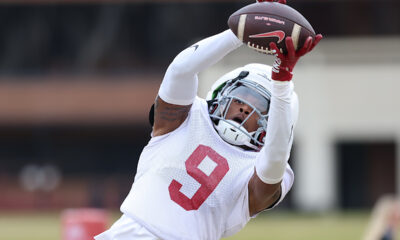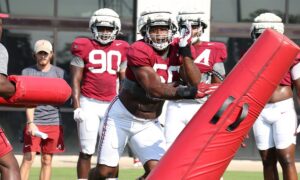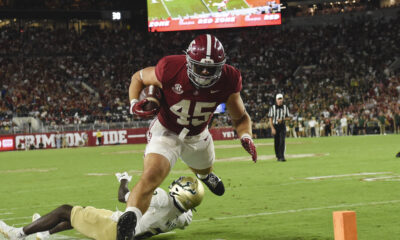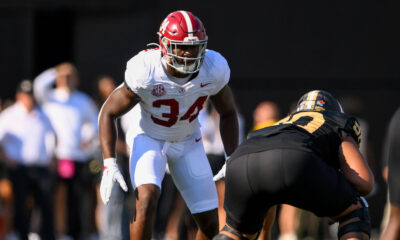Alabama football is comprised of three things: winning, family and execution.
Crimson Tide head coach Nick Saban, much like his players, hates to lose, detests people that complain and loathes injuries. Regardless of his views, all three are involved in football, especially medical mishaps. The latest issue happened last week as sophomore receiver Robert Foster tore a rotator cuff in his right shoulder. He was trying to catch a pass.
Foster was starting to find his niche on offense, but will miss the rest of the season.
“Built By Bama” and “Next Man Up” are battle cries, yet the latter will need to step forward this week. Coach Saban said in Monday’s press conference that “some younger players will get more chances at wide receiver.” He specifically named Calvin Ridley and ArDarius Stewart.
Sophomore receiver Cam Sims (knee) is healthy and can see an increased role with Foster out. Graduate transfer Richard Mullaney has been productive and feels like the Kevin Norwood that Alabama’s had in recent years. And then, there is junior receiver Chris Black.
He needs to demand the ball.
It does not matter who the next man is, what matters is the principle. Injuries hurt, but in hindsight it propels the next superstar into the mainstream and in the hearts of fans.
Ex-Crimson Tide wide receiver Amari Cooper is the perfect example.
About 95 percent of college football fans and reporters will believe with utter conviction that Cooper was the best wideout in the league last season. He set records, won a national championship (2012) and was the recipient of the 2014 Fred Biletnikoff Award; however, would he have achieved all of this if an injury to a teammate had not occurred? Probably not.
Chris Black and former Alabama receiver DeAndrew White played a crucial role in Cooper’s development. Black and Cooper both enrolled at Alabama in 2012 as Florida natives.
White arrived in Tuscaloosa, Ala., two years prior from Houston, Texas. Black came as an early enrollee, but a shoulder injury set him back. White was in amidst of a breakout season in 2012, after a solid outing against Michigan. He tore the anterior cruciate ligament in his knee during Alabama’s game against Mississippi in 2012. Cooper came in and caught eight passes for 84 yards and two touchdowns. He had a veteran’s confidence and the rest is history.
Another receiver that Coach Saban mentored was former three-star prospect Kevin Norwood. He’s widely-known by most Alabama fans as the “Tiger Killer” and “Mr. Clutch,” but it took an injury bug to push him into the National Football League.
A toe injury frustrated Cooper for much of 2013. He could not accelerate off the line of scrimmage and was not on the same page with AJ McCarron on numerous attempts.
Cooper’s minor “sophomore slump” opened up a chance for Norwood.
McCarron connected with Norwood on multiple crossing patterns and back shoulder throws. Norwood led Alabama in receiving in 2013 with 38 catches for 568 yards and seven scores.
Cameron Sims is healthy now, but it took him suffering a knee injury to motivate Robert Foster and ArDarius Stewart. Sims was tabbed as Cooper’s heir apparent, prior to the mishap.
Even former Alabama superstar Julio Jones benefited from an injury.
He was larger than life as a true freshman in 2008, posting 924 receiving yards and four touchdowns on 58 receptions.
A broken hand and small issues in his sophomore season, guiding him to a huge junior year. Jones caught 78 passes for 1,133 yards and seven touchdowns in the 2010 season.
Jones, Cooper, White and Norwood are all in the NFL.
Each one either had an injury or witnessed an injury that forced them to step up and deliver. Injuries can create success stories, and for this year’s Alabama team, it comes down to who is ready to go after it. Saban mentioned a lot of young names, but who will the “next man up?”
Stephen M. Smith is a senior analyst and columnist for Touchdown Alabama Magazine and SB Nation. You can “like” him on Facebook or “follow” him on Twitter, via @ESPN_Future.














